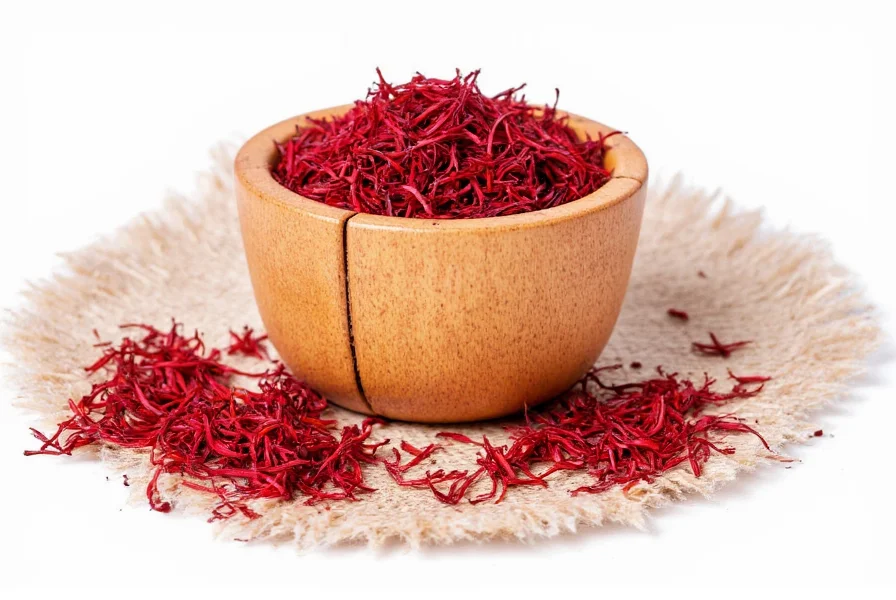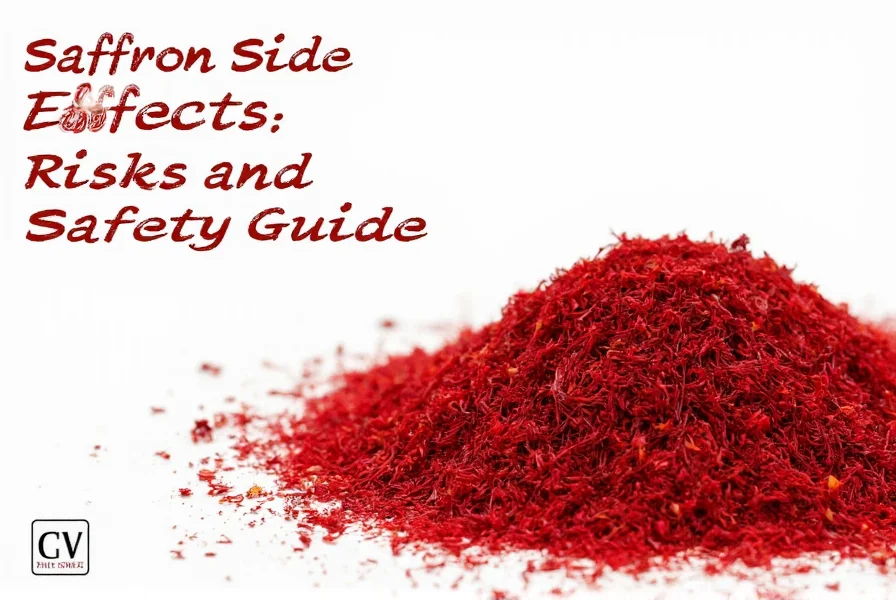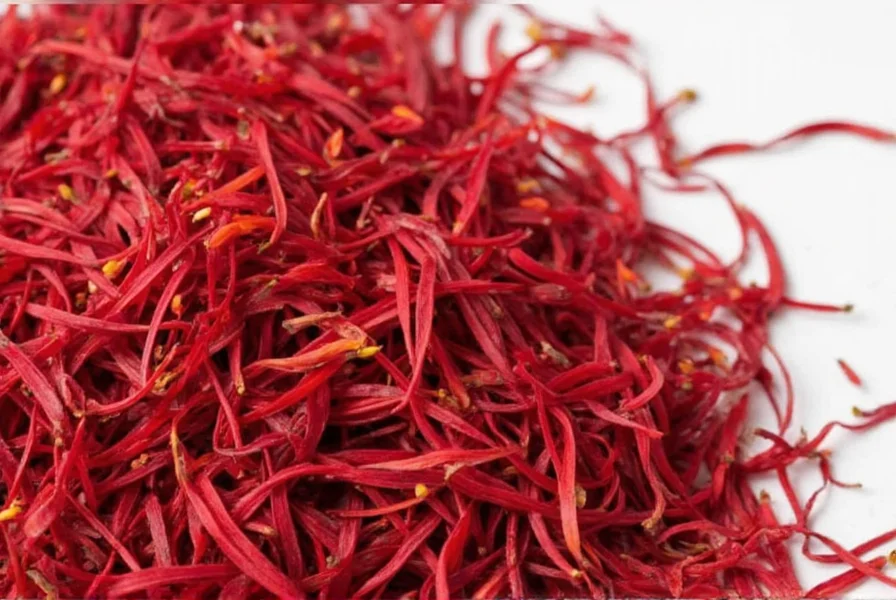Saffron, the world's most expensive spice derived from Crocus sativus flowers, has been used for centuries in cooking and traditional medicine. While generally safe when used as a culinary spice, understanding saffron side effects becomes crucial when considering it for medicinal purposes or higher consumption levels.
Understanding Saffron Consumption Levels
The distinction between safe culinary use and potentially problematic medicinal use is essential when evaluating saffron safety. Most adverse effects occur with doses exceeding typical cooking amounts. Research indicates that doses up to 1.5 grams per day are generally well-tolerated, while therapeutic doses in studies typically range from 30 mg to 100 mg daily for specific health conditions.
Common Mild Side Effects of Saffron
When consumed within reasonable limits, some individuals may experience mild saffron spice side effects including:
- Dry mouth
- Mild anxiety or restlessness
- Dizziness or lightheadedness
- Nausea or upset stomach
- Headaches
- Changes in appetite
- Altered smell perception
These effects typically resolve without intervention when saffron consumption is reduced or discontinued. Many people consume saffron regularly in cooking without experiencing any adverse reactions.
Serious Side Effects of High-Dose Saffron
Consuming saffron in amounts significantly exceeding culinary use can lead to more severe side effects. Understanding high-dose saffron risks is critical for anyone considering therapeutic supplementation:
| Dosage Level | Reported Effects | Medical Concern |
|---|---|---|
| 1.5-3 grams daily | Mild gastrointestinal issues, increased anxiety | Moderate - monitor symptoms |
| 3-5 grams daily | Significant dizziness, nausea, vomiting | High - consider medical consultation |
| 5-10 grams daily | Severe vomiting, bleeding tendencies, kidney damage | Very high - seek medical attention |
| 10-20+ grams daily | Organ failure, neurological issues, potential fatality | Extreme - emergency medical care required |
It's important to note that doses above 5 grams daily are considered potentially toxic, while doses exceeding 20 grams may be fatal. Documented cases of saffron toxicity are rare, as obtaining such quantities would be prohibitively expensive and physically difficult to consume.
Who Should Avoid Saffron?
Certain populations should exercise caution or avoid saffron supplementation entirely:
- Pregnant women: Medicinal doses may stimulate uterine contractions and increase miscarriage risk
- Breastfeeding women: Insufficient safety data for medicinal use
- People with bipolar disorder: Saffron may trigger mania in susceptible individuals
- Those scheduled for surgery: Discontinue at least 2 weeks before procedures due to potential bleeding risks
- Individuals with hormone-sensitive conditions: Theoretical concerns about saffron's potential estrogenic effects
Saffron Medication Interactions
Understanding saffron drug interactions is crucial for safe use. Saffron may interact with several medication classes:
- Anticoagulants (blood thinners): Saffron may increase bleeding risk when combined with warfarin, aspirin, or other blood thinners
- Antidepressants: Potential for serotonin syndrome when combined with SSRIs or MAOIs
- Antihypertensives: Saffron may lower blood pressure, potentially causing excessive drops when combined with medications
- Sedatives: May enhance the effects of CNS depressants including benzodiazepines
If you're taking any prescription medications, consult your healthcare provider before using saffron supplements to avoid potential saffron medication interactions.
Recognizing Adulterated Saffron Products
Some reported saffron side effects may actually stem from adulterated products. Unscrupulous sellers sometimes mix saffron with other substances like:
- Red dye #40 or other food colorings
- Stigmas from other crocus species
- Beetroot powder
- Artificial coloring agents
- Metallic contaminants (in cheap products)
Adulterated saffron products may cause unexpected reactions not typically associated with pure saffron. To ensure product safety, purchase saffron from reputable sources that provide authentication documentation.
Saffron Allergic Reactions
While uncommon, some individuals may experience saffron allergy symptoms including:
- Skin rash or hives
- Itching or swelling (particularly of the face, tongue, or throat)
- Severe dizziness
- Breathing difficulties
People allergic to olives, salsify, or other plants in the Iridaceae family may have higher risk of saffron allergy. Discontinue use immediately if you experience any signs of allergic reaction and seek medical attention for severe symptoms.
Safe Saffron Usage Guidelines
To minimize the risk of adverse effects while enjoying saffron's potential benefits:
- Start with small amounts to assess tolerance
- Never exceed 1.5 grams daily without medical supervision
- For therapeutic use, stick to doses studied in research (typically 30-100 mg daily)
- Purchase from reputable suppliers to avoid adulterated products
- Consult your healthcare provider before using saffron if you have medical conditions
- Discontinue use at least two weeks before scheduled surgery
Remember that culinary use in normal food preparation amounts (typically 0.03-0.1 grams per serving) carries minimal risk for most people. The majority of saffron side effects reports involve supplement use rather than normal cooking applications.

When to Seek Medical Attention
Contact a healthcare professional if you experience:
- Persistent vomiting or severe gastrointestinal distress
- Significant changes in heart rate or blood pressure
- Unexplained bleeding or bruising
- Severe dizziness that affects daily activities
- Symptoms of allergic reaction
- Mood changes that interfere with daily functioning
While rare, serious saffron side effects require prompt medical evaluation. Keep the product packaging available when seeking medical care to help healthcare providers identify potential causes.

Conclusion: Balancing Benefits and Risks
Saffron remains a safe and valuable spice when used appropriately in cooking. Understanding potential saffron adverse effects allows consumers to make informed decisions about its use. For most people, culinary use presents minimal risk, while medicinal applications require greater caution and professional guidance. Always prioritize quality sources and appropriate dosing to maximize benefits while minimizing potential side effects of saffron consumption.











 浙公网安备
33010002000092号
浙公网安备
33010002000092号 浙B2-20120091-4
浙B2-20120091-4